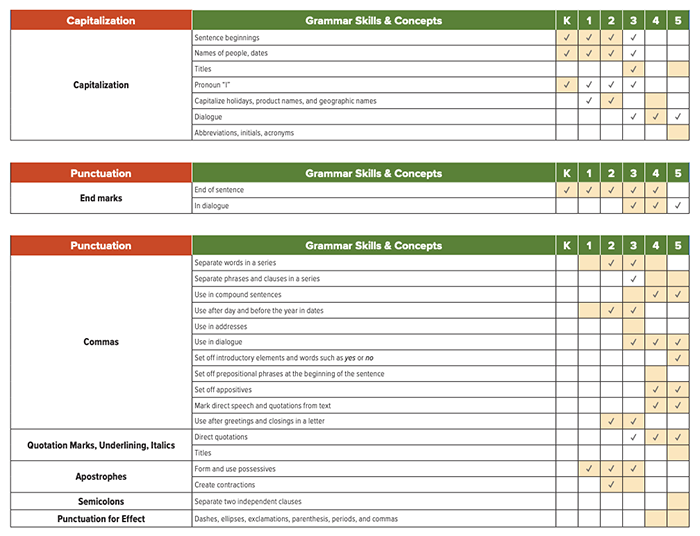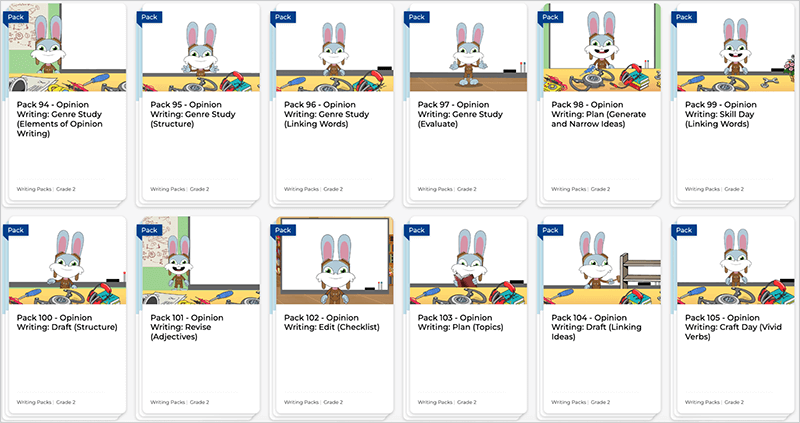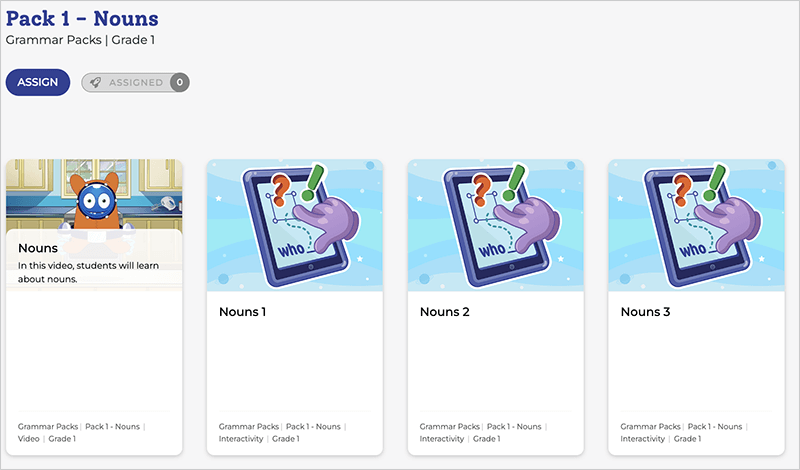The Science of Reading also includes writing. Just like teaching foundational literacy skills, writing instruction should be explicit and systematic as students learn the key skills necessary to become strong writers. A helpful framework for thinking about the components of a strong writing curriculum is the Simple View of Writing. The Simple View of Writing lists two factors that lead to skilled written expression: foundational writing skills and composition skills. Writing skills include transcription (handwriting, keyboarding), spelling, and punctuation. Composition skills include knowledge of the topic, vocabulary, sentence formation, grammar usage, knowledge of writing genres, and organization of text.

As I look through Writing A-Z®, a K-5 writing curriculum from Learning A-Z®, I see many components that address the Simple View of Writing. In the paragraphs below, I have organized these components according to writing skills and composition skills. However, it’s worth mentioning at the beginning that within Writing A-Z there is an interweaving of skills that helps students learn about genre and the writing process while also learning grammar and punctuation skills.
“One of my favorite parts of Writing A-Z is the inclusion of grammar instruction and sentence-level work. These composition skills are often overlooked when they really require explicit instruction.”
Foundational Transcription Skills
The Writing A-Z Skills Overview document makes it easy to see which writing skills are taught at different grade levels in the curriculum. Handwriting and spelling, two important components of writing and transcription skills, are included in Writing A-Z, but are not explicitly taught through this curriculum. Rather, they are taught in Foundations A-Z®, Learning A-Z’s foundational literacy curriculum. If your district is only using Writing A-Z, you will want to ensure that handwriting, explicit spelling, and phonics are being taught as part of your foundational reading curriculum. There will be opportunities in Writing A-Z to review and reinforce these important skills.
Punctuation skills are explicitly taught in Writing A-Z, throughout the different lessons and in separate grammar packs. Grammar Packs are supplemental instruction in punctuation and grammar skills that include a video and two to three practice games for students. The Grammar Packs are an especially helpful resource for teachers who are using Writing A-Z as a supplemental resource.

Text Composition Skills
Writing A-Z teaches writing genres alongside the writing process. For example, in the third-grade lessons, an entire unit is dedicated to each of the three main types of writing: opinion, informative, and narrative. Within each of these units, there are five modules spanning about five days each. The first module is a genre study that focuses on the characteristics of that genre. Then, modules two, three, and four introduce students to more specific types of writing within that genre. In the third-grade unit on informative texts, students work through a paragraph, a blog post, and a compare-and-contrast essay. For each of these types of writing, students will plan, draft, revise, and edit their writing. The final module within the unit is Publish and Present, and in this unit, students choose one of their own writing pieces from the previous lessons to edit and revise through to the publishing stage.
This combined approach helps students learn about the organization of different text structures while also practicing the key steps of the writing process. Anchor texts are included throughout the program, allowing students to see authentic examples of the writing they’re practicing. Additionally, in the Writing A-Z program, there are Writing Packs and Writing Process Packs that provide additional instruction and practice with various skills related to text structure and the writing process.

Grammar and Sentence Work
One of my favorite parts of Writing A-Z is the inclusion of grammar instruction and sentence-level work. These composition skills are often overlooked when they really require explicit instruction. It is a strength to see explicit instruction of grammar and sentences in the Writing A-Z program. The Gradual Release Model of I Do, We Do, You Do for each lesson ensures students receive direct instruction in skills followed by supportive practice before they are expected to demonstrate the skills independently. Students encounter grammar and sentence work in the main lessons of the program as well as in the Grammar Packs. I mentioned the Grammar Packs earlier when looking at punctuation, but it’s worth bringing them up again when thinking more specifically about parts of speech, subject-verb agreement, sentence types (e.g., statement, question, command, and exclamation), and sentence structure (e.g., simple, compound, and complex sentences). These Grammar Packs are an excellent resource for educators using Writing A-Z as their core curriculum or as a supplemental resource.

Knowledge of Topic and Vocabulary
Writing instruction can be strengthened when students have the opportunity to write about the things they’re learning about in other content areas. When students know a lot about a topic, it is easier for them to focus on writing skills, both transcription and composition, as they try new genres and styles of writing. While Writing A-Z includes an excellent overview of the main types of writing (opinion, informative, and narrative), it isn’t specifically organized around themes or topics. As the teacher in the classroom, I would blend the writing skills we’re learning through Writing A-Z with the specific topics we’re studying in our classroom. And since each grade level of the Writing A-Z curriculum includes approximately 16 weeks of instruction, I have ample time during the year to bring in topic-specific writing opportunities.
“As someone who has used a variety of writing resources and curricula in the past, I really like what is included in Writing A-Z. It includes explicit instruction in both composition and grammar skills, which is the hallmark of a good writing curriculum.”
In Summary: It’s Flexible and Comprehensive
As someone who has used a variety of writing resources and curricula in the past, I really like what is included in Writing A-Z. If I need a complete writing curriculum, I can use Writing A-Z as a standalone resource. If I need something to supplement my current writing curriculum, Writing A-Z also checks that box. It is well-rounded and complete enough to be used in both ways. Writing A-Z also includes explicit instruction in both composition and grammar skills, which is the hallmark of a good writing curriculum.
Try Writing A-Z in Your Classroom
Experience for yourself how this award-winning K-5 writing solution can simplify instructional planning and improve student outcomes.



